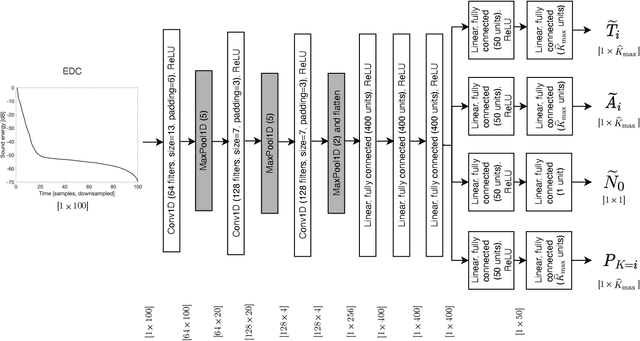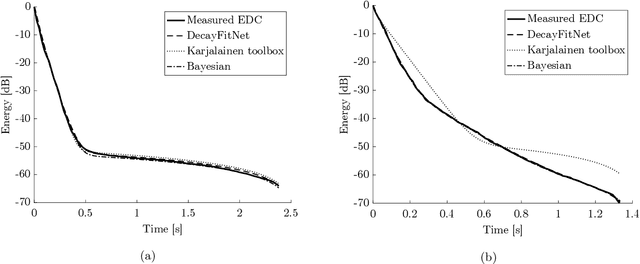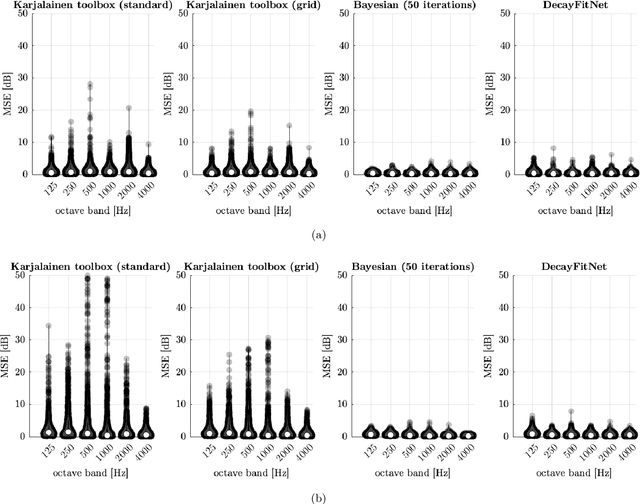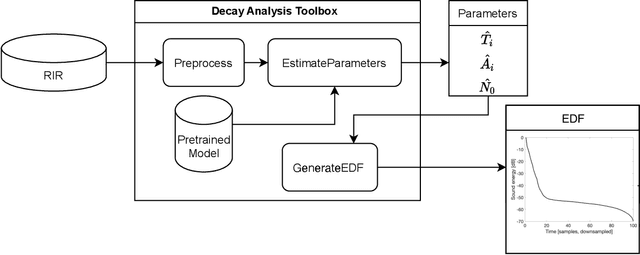Georg Götz
Room-acoustic simulations as an alternative to measurements for audio-algorithm evaluation
Sep 05, 2025Abstract:Audio-signal-processing and audio-machine-learning (ASP/AML) algorithms are ubiquitous in modern technology like smart devices, wearables, and entertainment systems. Development of such algorithms and models typically involves a formal evaluation to demonstrate their effectiveness and progress beyond the state-of-the-art. Ideally, a thorough evaluation should cover many diverse application scenarios and room-acoustic conditions. However, in practice, evaluation datasets are often limited in size and diversity because they rely on costly and time-consuming measurements. This paper explores how room-acoustic simulations can be used for evaluating ASP/AML algorithms. To this end, we evaluate three ASP/AML algorithms with room-acoustic measurements and data from different simulation engines, and assess the match between the evaluation results obtained from measurements and simulations. The presented investigation compares a numerical wave-based solver with two geometrical acoustics simulators. While numerical wave-based simulations yielded similar evaluation results as measurements for all three evaluated ASP/AML algorithms, geometrical acoustic simulations could not replicate the measured evaluation results as reliably.
Fade-in Reverberation in Multi-room Environments Using the Common-Slope Model
Jul 18, 2024



Abstract:In multi-room environments, modelling the sound propagation is complex due to the coupling of rooms and diverse source-receiver positions. A common scenario is when the source and the receiver are in different rooms without a clear line of sight. For such source-receiver configurations, an initial increase in energy is observed, referred to as the "fade-in" of reverberation. Based on recent work of representing inhomogeneous and anisotropic reverberation with common decay times, this work proposes an extended parametric model that enables the modelling of the fade-in phenomenon. The method performs fitting on the envelopes, instead of energy decay functions, and allows negative amplitudes of decaying exponentials. We evaluate the method on simulated and measured multi-room environments, where we show that the proposed approach can now model the fade-ins that were unrealisable with the previous method.
Deep Room Impulse Response Completion
Feb 01, 2024Abstract:Rendering immersive spatial audio in virtual reality (VR) and video games demands a fast and accurate generation of room impulse responses (RIRs) to recreate auditory environments plausibly. However, the conventional methods for simulating or measuring long RIRs are either computationally intensive or challenged by low signal-to-noise ratios. This study is propelled by the insight that direct sound and early reflections encapsulate sufficient information about room geometry and absorption characteristics. Building upon this premise, we propose a novel task termed "RIR completion," aimed at synthesizing the late reverberation given only the early portion (50 ms) of the response. To this end, we introduce DECOR, Deep Exponential Completion Of Room impulse responses, a deep neural network structured as an autoencoder designed to predict multi-exponential decay envelopes of filtered noise sequences. The interpretability of DECOR's output facilitates its integration with diverse rendering techniques. The proposed method is compared against an adapted state-of-the-art network, and comparable performance shows promising results supporting the feasibility of the RIR completion task. The RIR completion can be widely adapted to enhance RIR generation tasks where fast late reverberation approximation is required.
Neural network for multi-exponential sound energy decay analysis
May 19, 2022



Abstract:An established model for sound energy decay functions (EDFs) is the superposition of multiple exponentials and a noise term. This work proposes a neural-network-based approach for estimating the model parameters from EDFs. The network is trained on synthetic EDFs and evaluated on two large datasets of over 20000 EDF measurements conducted in various acoustic environments. The evaluation shows that the proposed neural network architecture robustly estimates the model parameters from large datasets of measured EDFs, while being lightweight and computationally efficient. An implementation of the proposed neural network is publicly available.
 Add to Chrome
Add to Chrome Add to Firefox
Add to Firefox Add to Edge
Add to Edge